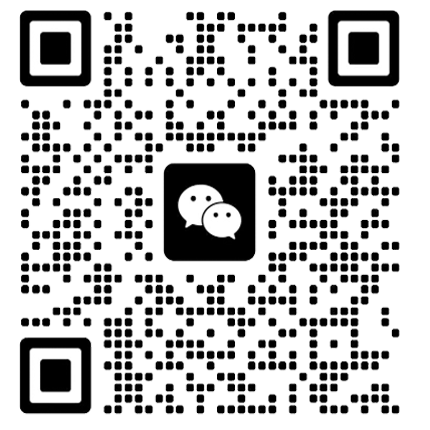The Internet of Things (IoT) will change our world. It is estimated that by 2025, there will be nearly 22 billion IoT devices. Expanding internet connectivity to everyday items will change the industry and save a lot of costs. However, how can devices that do not support the Internet obtain connectivity through wireless sensors?
With the help of wireless sensors, the Internet of Things has become possible. Individuals and organizations can use wireless sensors to enable many different types of intelligent applications. From connected homes to smart cities, wireless sensors have created the infrastructure on which the Internet of Things relies for survival. Understanding the working principles of wireless sensor technology is crucial for anyone planning to deploy IoT applications in the future. Let's take a look at the working principles of wireless sensors, emerging sensor wireless standards, and the roles they will play in the future.

What is a wireless sensor?
Wireless sensors are devices that can collect sensory information and detect changes in the local environment. Examples of wireless sensors include proximity sensors, motion sensors, temperature sensors, and liquid sensors. Wireless sensors do not perform heavy data processing locally, and they consume very little electricity. With the best wireless technology, a single battery can last for several years. In addition, sensors are easily supported on low-speed networks because they transmit very light data loads.
Wireless sensors can be grouped to monitor the environmental conditions of the entire area. These wireless sensor networks are composed of many spatially dispersed sensors that communicate through wireless connections. Sensors in public networks share data through nodes that integrate information at the gateway or each sensor directly connected to the gateway, assuming it can reach the necessary range. The gateway serves as a bridge connecting local sensors to the internet, serving as both a router and a wireless access point.
Types of wireless network topology
Wireless sensor networks are typically arranged in several different topologies. The most commonly used to support wireless sensor technology are star and mesh topologies.
#1: Star topology
A star topology is a topology where each node is directly connected to a central hub or gateway. In this arrangement, the node sends information to a single gateway, which then relays the message to the expected destination. Gateways can share information with many nodes simultaneously, making it easier to expand the network.
Because nodes do not directly exchange data between them, fewer peer-to-peer links are required. Therefore, star topology is easy to install, configure, and manage, as new nodes only need to be connected to one central point. Overall, star topology is a cost-effective solution that enables data transmission between numerous wireless sensors.
The downside is that the star topology relies entirely on the wireless link between the sensor and the central hub. Scope may be an issue as there is no means of intermediate "jumping" or signal repeaters. In addition, the expansion depends on the gateway's ability to support other nodes.
#2: Mesh topology
Mesh topology not only relies on a central hub, but also places data transmission responsibility on nodes within the network. In a mesh topology, nodes act as routers and can transmit information to other nodes. Therefore, the threat posed by connection issues with certain nodes is relatively small, as data can be transmitted along multiple paths to reach the gateway.
However, there are many significant issues with mesh networks. Mesh networks require more complex (and often overly complex) protocols to form the network and relay data at runtime. Another major drawback is that mesh networks consume more power than star topology, as?? Some nodes must remain connected to relay information. Usually, mesh networks are used as fast solutions for insufficient scope, which makes it difficult to justify expensive upfront investments.
#1: Wireless network
Wi Fi ("Wireless Fidelity") is a widely used local area network technology that can send information over two main frequencies, 2.4GHz and 5GHz. Wi Fi networks can transmit large data packets at relatively fast speeds over a medium range. The main advantage of Wi Fi is its availability in most households and businesses, making it a very convenient existing network.
The downside is that Wi Fi signals have limited ability to penetrate walls, and due to the protocol's extended data overhead, connected devices consume a significant amount of power compared to alternative wireless sensor protocols. In addition, the management of Wi Fi keys is in the local router, which means that key changes can easily damage previously connected sensors, and there is no simple way to update these keys. Devices such as televisions, laptops, and smartphones have displays that allow users to easily change keys, but most simple sensors do not have this type of interface and require a configuration process to modify keys. This makes long-term management and reliability a problem for Wi Fi sensors.
Most IoT sensors typically do not require the available bandwidth of Wi Fi. Therefore, for simple sensor devices, it is often not optimal. Finally, due to many high bandwidth devices competing for the same RF channel to stream video, audio, and other complex data transmission over Wi Fi, these devices may generate a lot of interference, blocking other devices that only need to send simple messages.
#2: Low power Bluetooth
Low power Bluetooth (BLE) is a low-power protocol designed to support short distance periodic low data rate wireless communication. Don't confuse it with classic Bluetooth technology that is perfect for streaming audio to speakers or headphones. BLE is suitable for wireless sensors that transmit small packets of information. This technology is a cost-effective alternative to Wi Fi, which consumes almost no power from the device. However, BLE also operates at 2.4GHz, which means that in addition to facing interference from other 2.4GHz devices, the protocol is limited in its range and ability to penetrate walls.
For over a decade, Zigbee has been a low-power alternative to Bluetooth and Wi Fi, making it the most suitable for wireless sensors that do not require too much bandwidth. This technology is built around the IEEE 802.15.4 standard and relies on mesh networks to transmit data. Therefore, Zigbee is often used to enable smart homes composed of many low-power devices. Compared to Z-Wave, Zigbee can support a large number of nodes - over 65000 in a single network. One drawback of Zigbee is that some nodes need to remain 'on' to relay information, as described in the wireless topology section earlier. In addition, infrastructure costs will also increase due to the need for routers to expand the scope. Generally speaking, Zigbee, DigiMesh, and other mesh networks can be considered expensive "bandaids" for poor RF performance, interference avoidance, and range.
#3: Z-Wave
Z-Wave is a wireless protocol designed specifically for smart home applications. This technology was developed by Zensys and is a replacement for Zigbee, which can operate in the "low noise" 900MHz frequency band to avoid significant interference issues. However, Z-Wave mesh networks can only support a limited number of wireless sensors and are limited by the mesh networks described earlier. In addition, users need to sign a license agreement with Silicon Laboratories to use the technology that increases fees. Ultimately, the main reason for building Z-Wave sensors is to be compatible with existing Z-Wave systems. Z-Wave is widely used in the home security industry because it allows bidirectional communication with endpoints through encrypted channels. Traditional home security protocols are unidirectional and unencrypted. Therefore, they are not suitable for applications such as door locks.
LPWAN standard for wireless sensors
The movement to connect simple devices such as sensors to the internet and the vision of connecting billions of daily items around the world has spawned a new class of wireless standards, classified as low-power wide area networks or LPWANs. LPWAN is a specific type of wireless technology used to send small amounts of data over long distances.
LPWAN networks consume much less power from connected wireless sensors and have lower access costs. Using LPWAN, end users can exchange bandwidth for a larger range, which is suitable for users deploying simple wireless sensors. LPWAN solutions are usually more cost-effective, enabling companies to achieve a positive return on investment for their IoT applications.
LoRa (abbreviation for "remote") is a popular wireless standard with higher bandwidth capacity than Sigfox. LoRa uses a proprietary modulation scheme called chirped spread spectrum, which can achieve excellent link margin and achieve signals below RF background noise. Therefore, LoRa sensors can transmit larger data packets over long distances in noisy environments. LoRa networks can use public LoRaWAN base stations or private gateways, making them particularly useful for wireless sensors in more remote areas where public access may not be available.
The LoRaWAN gateway can connect to cloud based LoRaWAN network servers. From there, the data is pushed to the application.
The benefits of wireless sensor technology and the Internet of Things
Wireless sensor technology has several benefits for IoT deployment:
Improving the responsiveness and efficiency of service companies: Pipeline and insurance companies can benefit from wireless leak sensors. Pipeline service providers can install these sensors in apartment buildings and apartment buildings to automatically warn them of any unit leakage. Insurance companies can also deploy leak sensors at home to minimize any damage that may be caused by unexpected floods.
Supporting patient healthcare through real-time monitoring: In advanced care facilities, wireless buttons are particularly important as they can be configured to alert staff when needed like mobile PERS devices. Just like in smart homes, these facilities can also use wireless door and window sensors to detect when residents are attempting to leave their rooms unattended.
Achieve better and more intelligent product management: Grocery stores and retailers can use different types of wireless sensors throughout their premises to protect assets. With the help of wireless air temperature sensors, facility managers can track the temperature levels in refrigeration devices and ensure the safety of perishable items.
Improving the safety of industrial environments: At car dealerships, fleet managers can install wireless acceleration based motion sensors in vehicles to receive notifications when the car is moving at night, which is a potential sign of theft. In the warehouse, facility managers can use wireless air sensors to calculate heat index and ensure that they maintain a healthy working environment for employees.
Preservation and maintenance of fragile artworks: In museums and art galleries, preservation experts can place wireless humidity sensors in rooms to monitor and regulate air conditions, thereby protecting cultural relics or artworks. Optical sensors can also be used to detect lighting levels and ensure guests have the best viewing experience.
Quickly protect and repair local infrastructure: Public utility companies can install high-temperature probes on power poles to detect transformer faults. With the help of tilt sensors, they can also configure sensors to send alerts to maintenance personnel in the event of a pole tilting or being hit by a vehicle.
Improving daily life
These are just a few examples of how wireless sensors can achieve IoT applications in our daily lives. Over time, we will continue to see innovation in different industries and other useful applications of this technology.
Contact: Qui
Phone: 18146178586
Tel: 18146178586
Email: qui@zonewu.com
Add: 1501-3, Building F03, Phase III, Software Park, Jimei District, Xiamen City, Fujian Province, China
We chat
